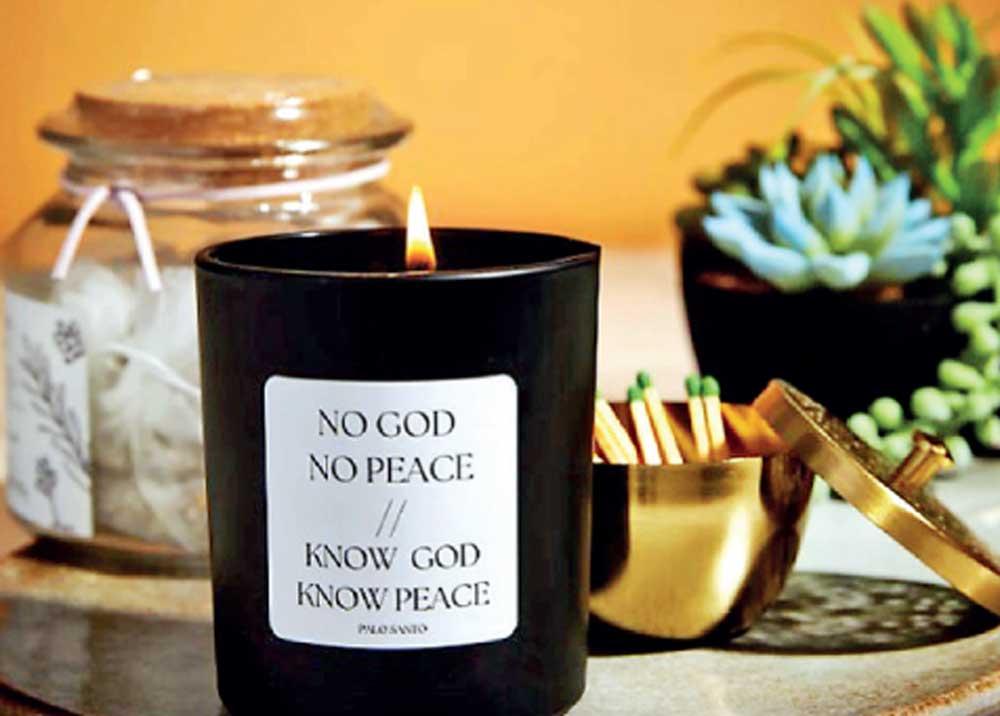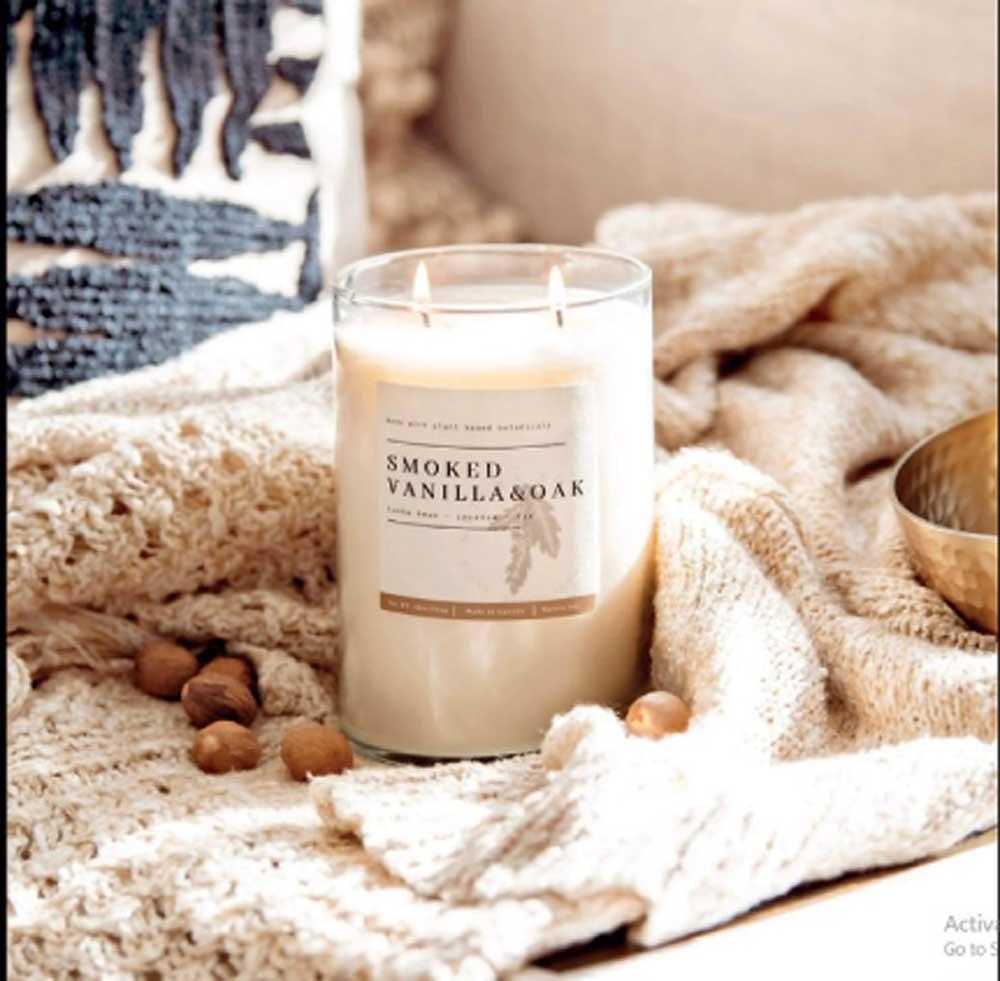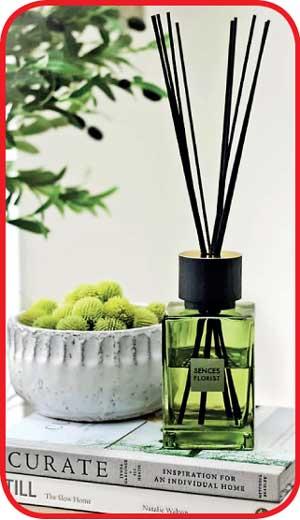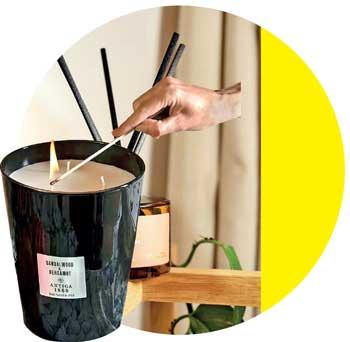
By Giselle Gunewardene
01.Our homes are more than just physical spaces, they are sanctuaries where we relax, recharge, and create memories. One of the most powerful ways to enhance this experience is through scent. The right aroma can uplift your mood, evoke nostalgia, promote relaxation, or energize your day. Creating a scented home isn’t just about filling the air with fragrance; it’s about crafting an atmosphere that feels uniquely yours. In this guide, we’ll explore how to effectively use candles, essential oils, and incense to create a home that smells inviting, luxurious, and deeply comforting. From choosing scents to layering aromas, and tips for lasting fragrance, here’s how to master the art of home scenting with impact.
Why Scent Matters in Your Home
Before diving into how to scent your home, it’s important to understand why scent is so impactful. Our sense of smell is closely linked to the brain’s limbic system, which governs emotion and memory. A fragrance can instantly transport you to a favourite place, trigger a feeling of calm, or boost your energy. This emotional connection makes scent an incredible tool in home design and wellness. Unlike décor, scent can change dynamically with seasons, moods, and activities. Imagine fresh citrus or mint in the morning to energize, soft lavender in the evening to unwind, or rich spices during festive gatherings. Using candles, oils, and incense, you can curate these moments seamlessly.
5. Layering Scents for a Signature Home Aroma
6. Tips for Maximizing Scent Longevity and Impact

To ensure your home stays fragrant throughout the day:
Ventilate: Fresh air helps scents circulate and prevents stagnation.
Clean regularly: Dust and odours can dull your scent experience.
Use scented textiles: Incorporate linen sprays or scented sachets in cushions, curtains, and bedding.
Switch scents seasonally: Embrace fresh florals in spring, citrus in summer, woods in fall, and spices in winter for a dynamic sensory experience.
Consider scent zones: Different rooms can have different scent profiles depending on their function and mood.
02.

1. Choosing the Right Scent Profile
The first step is selecting scents that resonate with you and suit your space. Here are some popular scent families and their effects:
Citrus (Lemon, Orange, Grapefruit): Energizing, refreshing, and uplifting, perfect for kitchens, bathrooms, and morning routines.
Floral (Rose, Jasmine, Lavender): Romantic, calming, and comforting, ideal for bedrooms and living areas.
Woody (Sandalwood, Cedar, Vetiver): Grounding, warm, and cozy, great for study rooms, dens, or evening relaxation.
Herbal (Eucalyptus, Rosemary, Mint): Invigorating and clarifying, useful in-home offices and bathrooms.
Spicy (Cinnamon, Clove, Nutmeg): Warm, festive, and inviting, excellent for communal spaces during colder months.
Gourmand (Vanilla, Coffee, Chocolate): Sweet and cozy, perfect for living rooms and dining areas.
Choose scents that reflect the mood you want to cultivate and complement your home’s aesthetic. You can also blend different notes for complexity, such as lavender and vanilla for a soft yet cozy ambiance.
 2. Candles: The Classic Choice with Visual Appeal
2. Candles: The Classic Choice with Visual Appeal
Candles are often the first go-to for home scenting because they combine fragrance with soft lighting, creating a sensory and visual atmosphere. Here’s how to use candles effectively:
Selecting Quality Candles
Wax Type: Opt for natural waxes like soy, beeswax, or coconut wax. They burn cleaner, last longer, and tend to hold fragrance better than paraffin.
Wicks: Cotton or wood wicks are preferable, as they burn evenly and don’t produce harmful chemicals.
Fragrance Load: Look for candles with a high fragrance load (typically 6-12%) for a strong scent throw.
Packaging: Choose candles in glass jars, tins, or ceramic holders that fit your décor style and can be reused.
Placement and Use
Place candles in rooms where you spend the most time, like living rooms, bedrooms, or bathrooms.
Avoid overcrowding a space with too many candles; start with one or two key pieces.
Burn candles for at least 1-2 hours to allow the wax pool to fully melt and distribute scent evenly.
Keep candles away from drafts, as wind can shorten burn time and reduce scent diffusion.
Safety Tips
Never leave burning candles unattended.
Keep them away from flammable objects and out of reach of children and pets.
Trim the wick regularly to prevent soot and uneven burning.
 Final Thoughts
Final Thoughts
Crafting Your Scented Sanctuary
Creating a scented home is an art and a personal journey. Experiment with candles, oils, and incense to discover what lifts your spirit and complements your lifestyle. A beautifully scented home invites you and your guests to feel welcomed, comforted, and inspired every time you walk through the door. Remember, scent is a powerful form of self-expression; let it tell your story.










